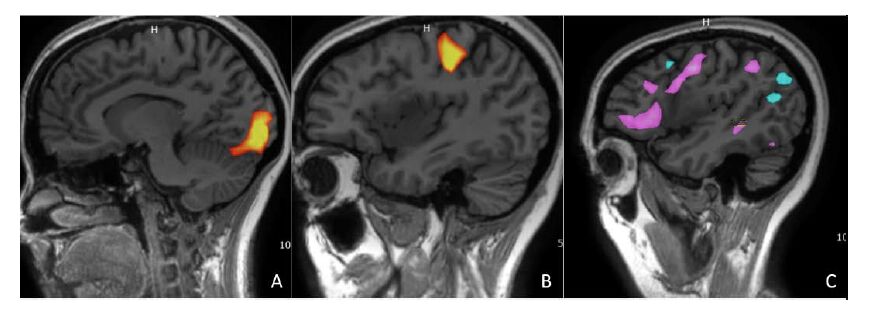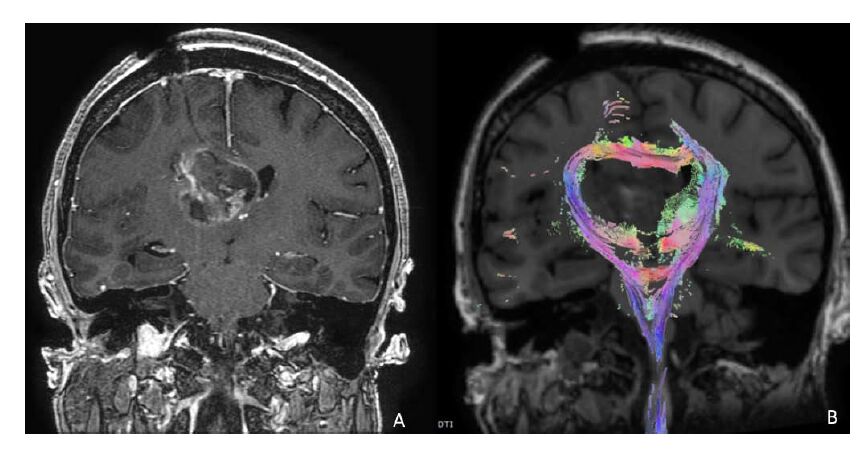1.
Introduction
Several branches of mathematics and engineering use Chebyshev polynomials (CPs), a famous class of orthogonal polynomials. In approximation theory, CPs are often used to represent and estimate functions precisely. They are ideal for giving highly accurate approximations because of their remarkable ability to minimize the greatest error. Filters with customized frequency responses are designed using CPs in signal processing. CPs also arise in other branches, such as mathematical physics, control theory, and mechanics; see [1,2]. In numerical analysis, the different kinds of CPs approximate solutions of different differential equations (DEs). Among the various kinds of CPs, four kinds are recognized as special Jacobi polynomials (see, for example, [3,4,5,6]). Various applications have introduced and utilized other types of CPs. Masjed-Jamei, in [7], introduced other CPs that differ from the first four kinds. This motivated him to call them the fifth and sixth kinds of CPs. In several applications, they were used; see, for example, [8,9,10]. Recently, the authors of [11] introduced other CPs and employed them to solve the nonlinear time-fractional generalized Kawahara equation.
Spectral methods, which are numerical approaches, are frequently employed to address partial differential equations (PDEs). The core concept of these methods is based on choosing two groups of trial and test functions; see [12,13,14,15]. In the Galerkin method, the two sets coincide; see [16,17,18]. In tau and collocation methods, we have more freedom to choose basis functions, for example; see [19,20,21,22,23]. The collocation method is advantageous due to its easy implementation; see, for example, [24,25,26,27].
Nonlinear equations are fundamental in many branches of mathematics, physics, and engineering because of the wide variety of phenomena they explain. The solutions to these equations are more difficult than the linear ones. Engineering encounters nonlinear equations in many areas, such as structural analysis, control systems, and electrical circuits. Since most nonlinear equations do not have known analytical solutions, numerical approaches are necessary. One of the most significant nonlinear equations is the FitzHugh–Nagumo (FH–N) equation, which predicts the propagation of nerve impulses. FitzHugh [28] and Nagumo [29] developed this equation. This equation has long piqued the attention of mathematicians and theoretical biologists; see [30]. Many numerical approaches have been followed to find analytical and numerical solutions to the FH–N problem. For instance, the authors of [31] used the cubic B-spline method with a finite one-step hybrid block approach to treat these equations. In addition, the authors of [32] also used a block method and a finite-difference scheme to treat them. The authors of [33] proposed analytical and numerical solutions to the FH–N equation. The authors of [34] found a few analytic solutions to the FH–N equation. The problem was solved using the Jacobi–Gauss–Lobatto collocation technique in [35]. In [36], a pseudospectral approach was used. In [37], a spline approach was followed. The finite difference method was used in [38]. A hybrid block method was used in [39].
This article aims to introduce special polynomials derived from the generalized Gegenbauer polynomials. We can categorize these polynomials as CPs because they connect to the existing forms of CPs through simple linear combinations. We present the essential characteristics and some significant formulas of these polynomials. Moreover, we solve the FH–N problem using the collocation method. We utilize the introduced CPs as basis functions. These polynomials are used for the first time, to the best of our knowledge. This motivated us to introduce and utilize them. The significance of the paper can be listed in the following items:
● Introducing Chebsyhev polynomials that are related to the well-known ones;
● Establishing some fundamental formulas of these polynomials, such as their power form and inversion formulas;
● Developing the operational matrices for the shifted Chebyshev polynomials;
● Designing a numerical algorithm based on the collocation method to solve the FH–N equation.
This article is structured with the following components: Section 2 discusses the generalized ultraspherical polynomials. In Section 3, new CPs are introduced alongside novel formulas for these polynomials. Section 4 analyzes a collocation method used to solve the FH–N problem. Error analysis is investigated in Section 5. Various examples to demonstrate the proposed scheme can be found in Section 6. Finally, conclusions are presented in Section 7.
2.
An overview of the generalized Gegenbauer polynomials
In this section, an account of the generalized Gegenbauer polynomials is given. Some useful formulas for these polynomials will also be presented.
The generalized Gegenbauer polynomials {G(ζ,θ)n(x)}n≥0 are orthogonal polynomials on [−1,1] with respect to w(x)=(1−x2)ζ−12|x|2θ. These polynomials can be defined as [40,41]
where (x)m=Γ(x+m)Γ(x) is the Pochhammer symbol and {P(ζ,θ)n(x)}n≥0 are the classical Jacobi polynomials. On [−1,1], the polynomials G(ζ,θ)n(x) are orthogonal according to [41]. We have
where hζ,θn is given by
Remark 2.1. The standard Gegenbauer (ultraspherical) polynomials can be deduced from the generalized Gegenbauer polynomials. More definitely, we have
where {C(ζ)n(x)}n≥0 are the Gegenbauer polynomials.
Remark 2.2. It is worth noting that many important classes of G(ζ,θ)n(x), were previously investigated. More definitely, the fifth, sixth, seventh, and eighth kinds of CPs, denoted, respectively, by Xn(x),Yn(x),Cn(x) and Zn(x), are given as
3.
Introducing a kind of CPs
Now we will introduce a certain kind of CPs, Nk(x), k≥0, which is considered a special case of G(ζ,θ)n(x) after putting ζ=2,θ=1. Therefore, from (2.1), these polynomials can be defined as:
Remark 3.1. We comment on our choices for the parameters ζ=2,θ=1 for the following reasons:
● The generalized polynomials G(ζ,θ)n(x) depend on two parameters, requiring extensive research to derive theoretical formulas for their application in solving different differential equations. The specific choice of parameters helps simplify the computations for some formulas.
● Previous studies have considered specific values of the two parameters of G(ζ,θ)n(x). For instance, in [7], the author introduced the fifth and sixth kinds of CPs by selecting specific parameters. In this paper, we investigate the practical and theoretical implications of choosing ζ=2 and θ=1.
● To our knowledge, this specific choice has not been investigated, making it a new contribution to the literature.
● The choice of ζ=2 and θ=1, also enables us to investigate the analysis of the errors resulting from the approximation.
● We anticipate that additional theoretical formulas for these polynomials, such as their linearization formulas, will be helpful in other applications.
The first few instances of Nk(x) are as follows:
3.1. Some important relations of Nk(x)
From (2.2), it is easy to see that the orthogonality relation of Nk(x) takes the following form:
where
Lemma 3.1. Let j be a positive integer. The polynomials Nj(x) can be expressed as
Proof. Formula (3.4) can be split into the following two formulas:
Thus, we show (3.5) and (3.6). If we note the following expression for the Jacobi polynomials [42]:
then, the form in (3.1) implies that N2ℓ(x) and N2ℓ+1(x) can be, respectively, expressed as
which yield the following two hypergeometric expressions:
By expanding the two hypergeometric functions 2F1(z) in (3.10) and (3.11) as two finite series and performing some computations, formulas (3.5), and (3.6) can be obtained. □
Lemma 3.2. Let j be a positive integer. The inversion formula of Nj(x) is given as follows:
Proof. The inversion formula (3.12) can be split into
which can be proved following similar procedures to those given for the fifth kind of CPs in [43]. □
Theorem 3.1. The k-th derivative: dkNs(x)dxk may be expanded as
where
Proof. Formula (3.15) may be divided into the following four equations:
The above four formulae have analogous proofs. We prove (3.18). Using formula (3.6), we can write
The utilization of (3.13) converts the last formula into
which can be rewritten as
That last formula can be written as in (3.18). □
Remark 3.2. It is now more beneficial for us to reformulate Theorem 3.1 as follows:
Theorem 3.2. The k-th derivative: dkNs(x)dxk may be expanded as
where
and
and GkL,s is as given in (3.16).
3.2. The shifted polynomials on [0,1]
Now we define the shifted CPs N∗k(x) on [0,1], which are given by
From (3.2), and (3.3), it can be shown that {N∗k(x)}n≥0 are orthogonal on [0,1] such that
where w∗(x)=(1−2x)2(x(1−x))3/2 and hn is given in (3.3).
Theorem 3.3. The kth-derivative of N∗j(x) may be written as
with
where BkL,j is given in (3.24).
Proof. Substituting (2x−1) for x in Theorem 3.2 results in (3.27). □
4.
Numerical procedure for treating the FH–N equation
Within this section, we will examine the following FH–N equation [37]:
which is constrained by the following initial and boundary conditions:
where a0(x),a1(t) and a2(t) are given functions. Define
where Ω=(0,1]2. Then, any function zM(x,t)∈⋁(Ω) may be written as
where N∗(x)=[N∗0(x),N∗1(x),…,N∗M(x)] and C=(cij)0≤i,j≤M is the matrix of unknowns with the order (M+1)2.
Now we analyze a collocation algorithm for solving (4.1) governed by (4.2). This algorithm utilizes the operational matrices of the derivatives of N∗k(x). These two formulas follow directly from Theorem 3.3.
Corollary 4.1. Consider the vector N∗(x)=[N∗0(x),N∗1(x),…,N∗M(x)]. Theorem 3.3 enables us to write the first and second derivatives of N∗s(x) in matrix form as
where Q=(˜B1L,s) and M=(˜B2L,s) are the operational matrices of derivatives given by
Now, by using Eq (4.4), we can represent the residual R(x,t) of Eq (4.1) as
Applying Corollary 4.1 enables us to represent the residual R(x,t) in (4.6) in the following matrix form:
Remark 4.1. N∗r(0) and N∗r(1) can be deduced to give the following relations:
By using the spectral collocation approach and causing the residual R(x,t) to be zero at certain collocation points (xi,tj), we may get the expansion coefficients cij.
Moreover, the conditions in (4.2) lead to
where {(xr,ts):r,s=1,2,3,…,M+1} are the first distinct roots of N∗r(x), and N∗s(t), respectively. Hence, Newton's iterative approach may be used to solve the (M+1)2 nonlinear system in (4.9)-(4.10).
5.
Error bounds
Here, we comprehensively examine the suggested polynomial expansion's error analysis corresponding to the one-dimensional (1-D), and two-dimensional (2-D) CP-weighted Sobolev spaces. Four theorems will be formulated and shown.
● For the truncation error variable t, the first theorem provides error estimation for the kth-derivative in 1-D CP-weighted Sobolev space.
● For the truncation error variable x, the second theorem provides error estimation for the pth-derivative in two-dimensional (2-D) CP-weighted Sobolev space.
● For the truncation error variable t, the third theorem provides error estimation for the qth- derivative in 2-D CP-weighted Sobolev space.
● The last theorem shows that ‖RM(x,t)‖L2ω(x,t), for a sufficiently large M, will be small enough.
Assume that the following CPs-weighted Sobolev space:
where I=(0,1] with the inner product, norm, and semi-norm, which are, respectively,
where m∈N.
Lemma 5.1. As in [44], for n≥1, n+r>1, and n+s>1, where r,s, are any constants, we have
where
Theorem 5.1. Let ˉχ(t)=∑Mj=0ˆχjN∗j(t) be the approximate solution of χ(t)∈Hα,mw∗(t)(I). Then for 0≤k≤m≤M+1, we get
where \mathcal{A}\lesssim \mathcal{B} indicates the existence of a constant \nu such that \mathcal{A}\leq \nu\, \mathcal{B}.
Proof. The definitions of \chi(t) and \hat{\chi}(t) allow us to have
To estimate the factor \frac{||D_{t}^{k}\, \mathcal{N}^*_{\mathcal{M}+1}(t)||^{2}_{L^{2}_{w^\mathcal{*}(t)}}}{||D_{t}^{m}\, \mathcal{N}^*_{\mathcal{M}+1}(t)||^{2}_{L^{2}_{w^\mathcal{*}(t)}}}, we first find ||D_{t}^{k}\, \mathcal{N}^*_{\mathcal{M}+1}(t)||^{2}_{L^{2}_{w^\mathcal{*}(t)}} as follows:
If we make use of Eq (3.4), and the relation: (2\, t-1)^j = \sum\nolimits_{k = 0}^j\, (-1)^{j-k}\, \binom{j}{k}\, (2\, t)^k, followed by expanding, rearranging, and collecting the similar terms, then the following formula can be obtained:
where
and
By applying D_{t}^{k} to Eq (5.8), one gets
Accordingly, we have
The application of the Stirling formula enables one to obtain the following inequalities:
By virtue of the Stirling formula and Lemma 5.1, ||D_{t}^{k}\, \mathcal{N}^*_{\mathcal{M}+1}(t)||^{2}_{L^{2}_{w^\mathcal{*}(t)}} can be written as
where \lambda^* = \max\limits_{0\leq r\leq \mathcal{M}+1}\left\{ \frac{3 \sqrt{\pi }\, \lambda^{2}_{r, \mathcal{M}+1}}{4}\right\} .
Similarly, we can get
Accordingly, we have
By inserting Eq (5.16) into Eq (5.6), one has
Therefore, we get the desired result. □ Now, assume the following 2-D CP-weighted Sobolev space:
equipped with the following norm and semi-norm:
where \omega(x, t) = w^\mathcal{*}(x)\, w^\mathcal{*}(t) and r, s\in \mathbb{N}.
Theorem 5.2. Given the assumptions 0\leq p\leq r\leq \mathcal{M}+1, the approximation to \mathrm{z}(x, t)\in{\mathbf{H}^{r, s}_{\omega(x, t)}}(I\times I) is \mathrm{z}_{\mathcal{M}}(x, t) . As a result, the estimation that follows is applicable:
Proof. According to the definitions of \mathrm{z}(x, t) and \mathrm{z}_{\mathcal{M}}(x, t), one has
Now, by applying the same procedures as in Theorem 5.1, we obtain
□
Theorem 5.3. Given the assumptions 0\leq q\leq s\leq \mathcal{M}+1, the approximation to \mathrm{z}(x, t)\in{\mathbf{H}^{r, s}_{\omega(x, t)}}(I\times I) is \mathrm{z}_{\mathcal{M}}(x, t) . As a result, the estimation that follows is applicable:
Proof. The proof of this theorem is similar to the proof of Theorems 5.1 and 5.2. □
Theorem 5.4. Let \mathbf{\mathcal{R}}_{\mathcal{M}}(x, t) be the residual of Eq (4.1). In that case, {\|\mathbf{\mathcal{R}}_{\mathcal{M}}(x, t)\|}_{L^{2}_{\omega(x, t)}} will be sufficiently small for sufficiently large values of \mathcal{M} .
Proof. \mathbf{\mathcal{R}}_{\mathcal{M}}(x, t) of Eq (4.1) can be written as
Subtracting Eq (5.24) from Eq (4.1) leads to the following equation:
If we consider L^2 -norm, then, with the aid of Theorems 5.2 and 5.3, we get
It is clear from Eq (5.26) that for sufficiently high values of \mathcal{M} , {\|\mathbf{\mathcal{R}}_{\mathcal{M}}(x, t)\|}_{L^{2}_{\omega(x, t)}} will be small enough. Thus, the proof of this theorem is finished. □
6.
Some numerical tests
In this section, we present test examples to show the applicability of our proposed method and compare it with other methods.
Example 6.1. The authors of [37] considered the FH–N equation of the form
governed by the following initial and boundary conditions:
where the exact solution to this problem is given by
Table 1 gives a comparison of the maximum absolute error (MAE) between our method and the method in [37] at t = 1 . Figure 1 shows the exact and the approximate solutions at a = 0.5 and \mathcal{M} = 12 . Figure 2 shows the MAE at a = 1 and \mathcal{M} = 12 . Table 2 presents the absolute error (AE) at a = 0.9 and \mathcal{M} = 12 . Figure 3 shows the AE (left) and the approximate solution (right) at a = 0.1 and \mathcal{M} = 12 .
Example 6.2. The authors of [45] considered the FH–N equation of the form
governed by the following initial and boundary conditions:
where the exact solution of this problem when a = 1, is
Table 3 gives a comparison of AE at t = 0.001 between our method and the method in [45]. Figure 4 shows the absolute error (AE) (left) and the approximate solution (right) at \mathcal{M} = 12 . Table 4 presents the MAE and the CPU time (in seconds) used at different values of \mathcal{M} .
Example 6.3. The authors of [35] considered the FH–N equation of the form
subject to the following initial and boundary conditions:
where \mathrm{z}(x, t) = \frac{1}{2} \tanh \left(\frac{x-\frac{(2 a-1) t}{\sqrt{2}}}{2 \sqrt{2}}\right)+\frac{1}{2} is the exact solution of this problem.
Table 5 presents the MAE and the CPU time used (in seconds) when a = 0.1 and a = 0.5 at different values of \mathcal{M} . Figure 5 shows the AE (left) and the approximate solution (right) at a = 1 and \mathcal{M} = 12 . Table 6 shows the AE at different values of a when \mathcal{M} = 12 .
Example 6.4. Consider the FH–N equation of the form
subject to the following initial and boundary conditions:
Since the exact solution is not available, we define the following absolute residual error norm:
and apply the presented method at \mathcal{M} = 10 to get Figure 6, which illustrates the RE at different values of a .
7.
Conclusions
This article has provided numerical solutions for the FH–N equation. The celebrated collocation method was applied to obtain the proposed approximate solutions. New basis functions were considered. These basis functions are special cases of the generalized Gegenbauer orthogonal polynomials. They are related to CPs. New derivative expressions for these polynomials were developed. Hence, new operational matrices of the derivatives were introduced. These matrices and the application of the collocation algorithm helped transform the FH–N equation into nonlinear systems of equations that can be treated using a suitable solver. To our knowledge, these polynomials have not been used before in approximating solutions to differential equations. We hope to use them to approximate other differential equations. All codes were written and debugged by Mathematica 11 on an HP Z420 workstation, (processor: Intel(R) Xeon(R) CPU E5-1620 v2 at 3.70 GHz, 16 GB RAM DDR3, and 512 GB storage).
Author contributions
Waleed Mohamed Abd-Elhameed: Conceptualization, methodology, validation, formal analysis, investigation, supervision, project administration, writing—original draft, writing—review & editing; Omar Mazen Alqubori: Methodology, validation, investigation, writing—review & editing, funding acquisition; Ahmed Gamal Atta: Conceptualization, methodology, software, validation, formal analysis, investigation, writing—original draft, writing—review & editing, visualization. All authors have read and approved the final version of the manuscript for publication.
Use of Generative-AI tools declaration
The authors declare that they have not used artificial intelligence tools in the creation of this article.
Conflict of interest
The authors declare that they have no competing interests.









 DownLoad:
DownLoad:











